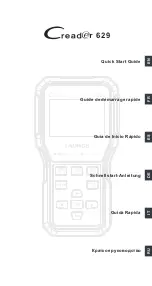
4
GENERAL DESCRIPTION
The Cole-Parmer FSB-200-P-AC employs the principle of fluidization of a mass of finely divided particles (alumina)
to provide a safe, essentially isothermal environment with a high rate of heat transfer. The FSB-200-P-AC is
specially designed to allow the operating temperature of the fluidized bath to be adjusted from a remote source
while the bath is unsupervised. An automatic fluidizing air control system is fitted which adjusts the air flow rate
accordingly to suit the set temperature of the bath. This automatic air feature is controlled by a control system
which switches five solenoid valves. These valves are opened and closed in various combinations, providing
eighteen air flow rates corresponding to eighteen different temperatures throughout the operating range.
To achieve a state of fluidization, a gas stream is forced to pass vertically through the bed of fine powder;
chromatographic alumina (a specially refined grade of aluminium oxide) is the fluidizing medium used in the FSB-
200-P-AC. At and above a certain critical value of flow rate, the particles become separated from each other and
the whole mass behaves like a liquid. In this state, the powder will flow and move as though it were a liquid; low
density objects will float on it, while more dense ones will sink; more importantly though, the individual alumina
particles will circulate within the bath giving an essentially uniform temperature distribution throughout the
working volume of the bath and a high degree of thermal coupling between the heat source and load.
In addition, the mass of fluidized powder changes its basic characteristics very little over a wide temperature
range, has no freezing point and no practical boiling point and therefore by suitable choice of fluidizing media,
the principle of fluidization can be used to temperatures over 1700°C and below -120°C.
The most commonly used fluidizing gas is compressed air. It is important that it should be clean, dry, free from
oil and at a constant pressure. Antylia Scientific can supply a filter/regulator assembly (part code F5915) for
compressed air which does not comply with the above requirement. Antylia Scientific are alternatively able to
offer a suitable free-standing air compressor complete with the necessary filtration system (part code F120D) for
installations where a compressed air supply is not available. Any other inert gas, such as nitrogen, could be used
for special applications provided appropriate precautions are taken. The FSB-200-P-AC specification applies only
when compressed air is used.
APPLICATION
The characteristics of the FSB-200-P-AC in terms of thermal uniformity and heat transfer make it a useful tool in
the calibration and testing of a very wide range of temperature sensors; however, the unit is applicable to many
other processes, such as thermal testing of sensitive components e.g. semiconductor devices, wire products,
delicate transducers - and can be used as a constant temperature environment for chemical reactions.
Because the fluidized bed is composed of a fine dry powder, it does not display the surface tension effects of
liquid baths and does not wet any objects immersed in it. The basic electrical insulating property of the alumina
used in the FSB-200-P-AC is not affected by fluidization, making it possible to conduct electrical measurements
on immersed objects such as assembled printed circuit boards.
Note
: Avoid siting the FSB-200-P-AC in a laboratory environment which contains instruments that are sensitive
to dust. Although the fluidized bath has its own dust extraction system, a small amount of fine dust may still be
emitted during operation.






































